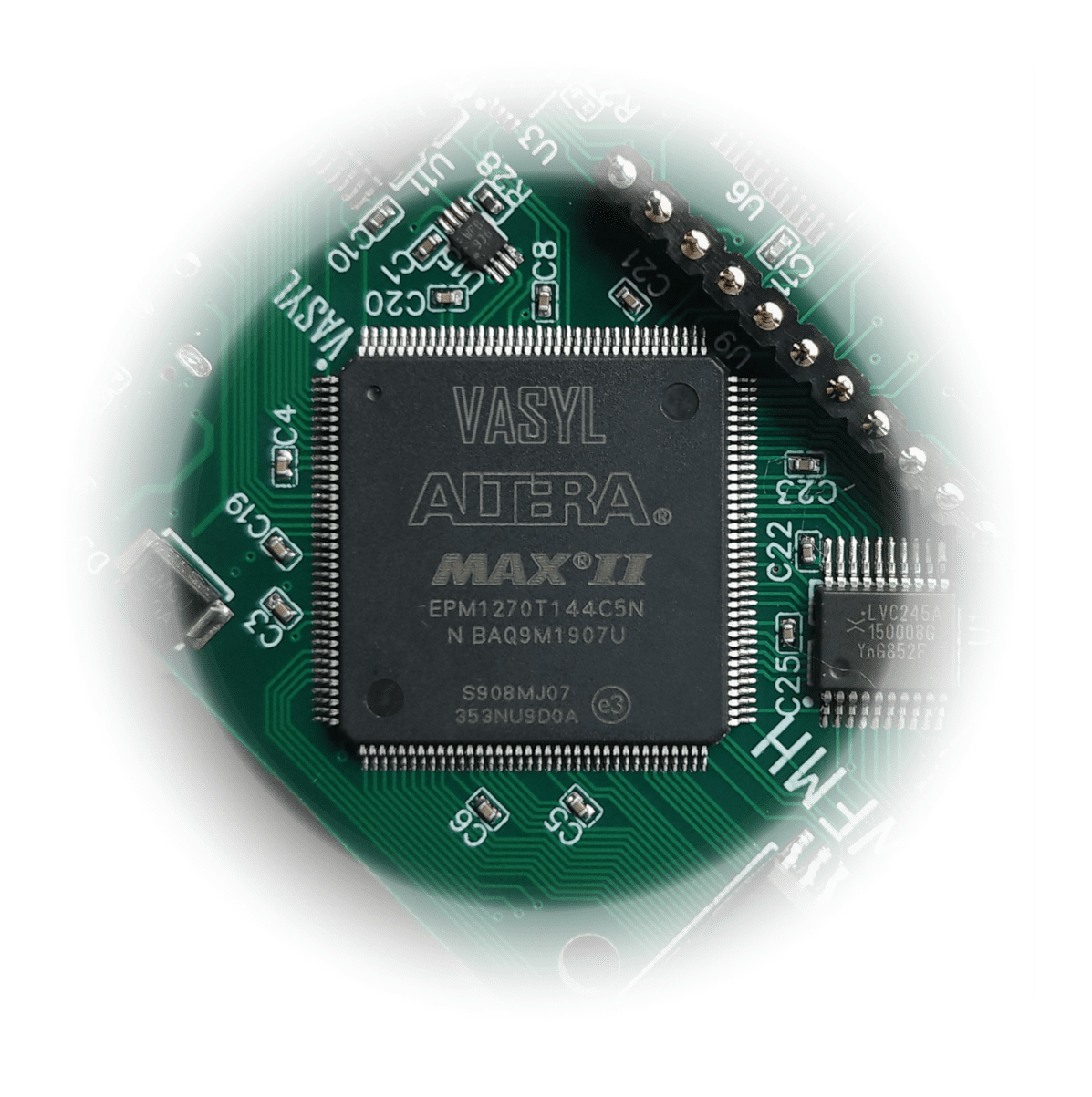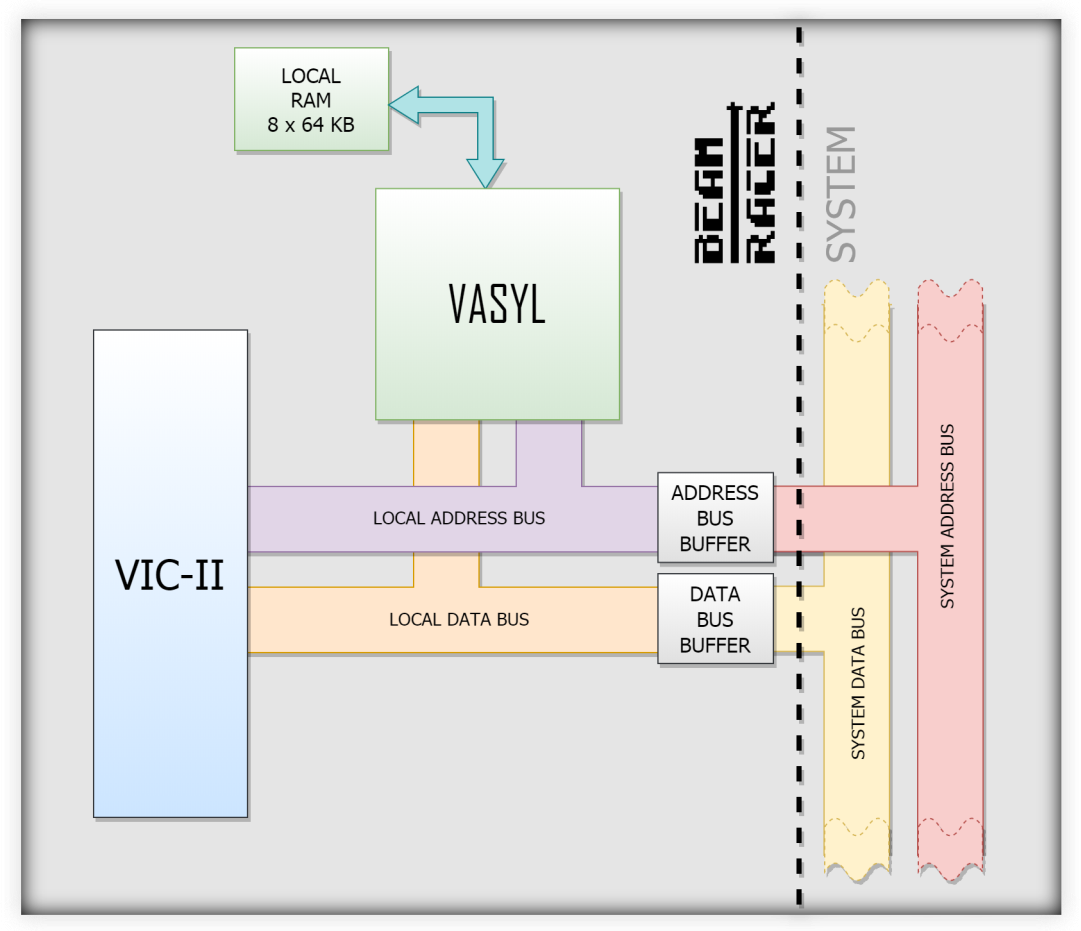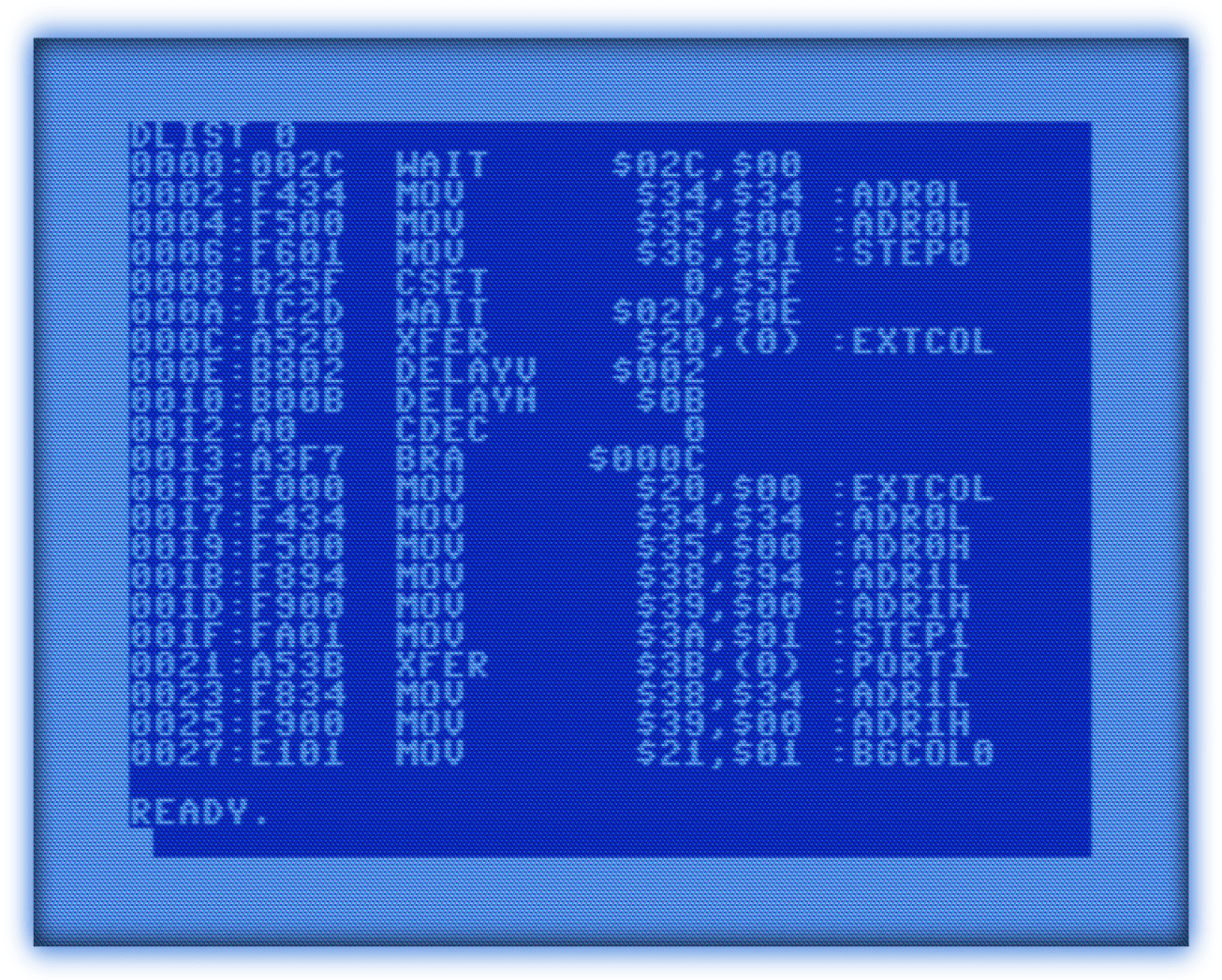
BeamRacer adds a new member to C64’s family of chips—VASYL—a programmable coprocessor whose role is making the venerable VIC-II shine. With its own instruction set, local memory, and privileged, precisely timed access to VIC-II, VASYL upgrades the C64 in two ways: provides an effortless yet highly accurate way of controlling the VIC-II, and frees the main CPU for other tasks. Think Amiga Copper on steroids.
BeamRacer wraps itself around VIC-II and takes responsiblity for managing its communication with the rest of the system. To minimize interference with the 6510 operations, VASYL relies on local memory to store its program and data. It also has a custom connection to VIC-II that can be isolated from the main system bus, allowing the 6510 to run at full speed most of the time. VASYL can even program itself, further reducing the need to bother the main CPU with mundane and repetitive graphics tasks.


Bitmap sequencer is a VIC-II circuit responsible for feeding display data to the video pipeline. Its inflexibility is one of the reasons the HiRes mode does not see much use, and visual effects that are easy to achieve on some other 8-bit machines, require sophisticated tricks to pull off on the C64.
BeamRacer makes the sequencer fully programmable, with video data coming from any location, in any order, and to any screen area (including top and bottom borders).
Not everyone is an assembler programmer. But even hardcore code grinders appreciate high-level languages for their compactness and fast prototyping. VBASIC serves both groups: weekend code warriors can access new capabilities enabled by BeamRacer without diving into intricacies of 6510 assembly language. Seasoned C64 developers will appreciate being able to test their ideas interactively, shortening the code-test-debug cycle.


And speaking of debugging, we even added a VASYL disassembler to VBASIC, making it an indispensable tool for any BeamRacer programmer. With the accompanying visual memory viewer (mouse-enabled!) and register name decoding, hunting and squashing bugs is more fun than ever!
It's a well-known VIC-II’s deficiency—vertical bars across the screen, their intensity varying with the chip’s version and model. While especially troubling on modern digital displays, they can be noticed even on a small CRT. Over the years hackers have developed hardware solutions that attenuate the bars, but they always affect display quality, blurring the picture and reducing contrast.
That is, until today. BeamRacer comes with an integrated Lumafix Pro (patent pending) that produces crystal-clear, sharp image.
IMPORTANT NOTE: with some Commodore 64C units (flat casing, narrow mainboard) minor capacitor soldering may be required in order to correctly close the computer case after BeamRacer installation.
Memorize this, there will be a test later...
(Video Assistance and Support Logic)